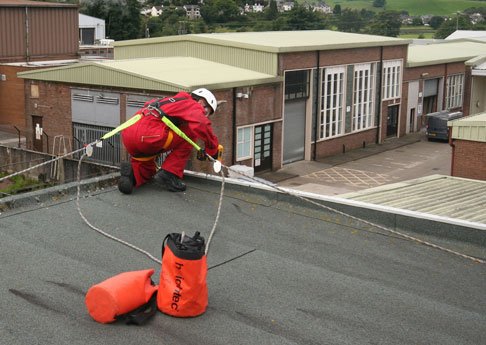Personal fall protection – top tips
In the first of two articles for SHP, David Thomas CFIOSH, technical director, heightec, explains the steps to take to reduce injury from falls in the workplace.

Gravity is no respecter of persons; all too often, a failure or shortcoming results in death or serious injury.
Experience shows that falls from height usually occur as a result of poor management control, rather than because of equipment failure. Common factors include:
- Failure to recognise a problem;
- Failure to provide a safe system of work;
- Failure to ensure that a safe system of work is followed;
- Inadequate information, instruction, training or supervision provided;
- Failure to use appropriate equipment; and
- Failure to provide safe plant and/or equipment.
The use of personal equipment for protection against falls should be a ‘last resort’ and is low in the hierarchy of protective measures (sometimes referred to as the ‘fall protection hierarchy’).
Frequently, the hazard of working at height cannot be eliminated, e.g. designed out ‘at source’, or the work undertaken in a different manner, e.g. by a method that is higher in the hierarchy; work should be carried out at the highest possible level.
In broad terms, the hierarchy of protective measures is as follows:
- Prevent the fall;
- Minimise the distance and consequences (i.e. injury) of the fall;
- Minimise the consequences resulting from the fall; and
- Use methods and/or equipment (e.g. a ladder) not utilising fall protection.
There may also be other issues to consider, depending upon the nature and location of the work, the competence and experience of operatives and possible local or regional legislative requirements.
It is useful to remember that there are two essential elements in the protection of persons against falls from a height – the first element is the primary support and the second is the fall protection system Managers should select staff that have an appropriate combination of experience, knowledge and practical skills in working at height (as well as trade skills).
It is recommended that competence be assessed at different levels, e.g. operative, supervisor and manager. All staff working at height will need to be physically and mentally suitable for such work and will need to have at least elementary background knowledge of personal fall protection equipment.
Personal fall protection – top tips
In the first of two articles for SHP, David Thomas CFIOSH, technical director, heightec, explains the steps to take to reduce injury from falls in the workplace.
Safety & Health Practitioner
SHP - Health and Safety News, Legislation, PPE, CPD and Resources Related Topics
Company fined as worker has leg amputated
Inclusivity in PPE: The manufacturer’s perspective
Future-proofing safety: Five trends shaping the PPE landscape of tomorrow


Good key messages.
Good key messages.